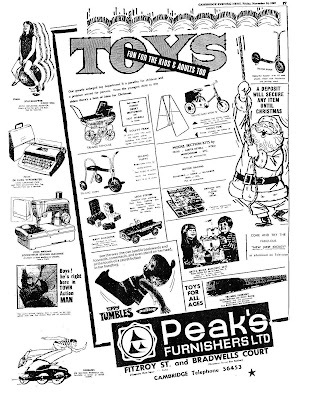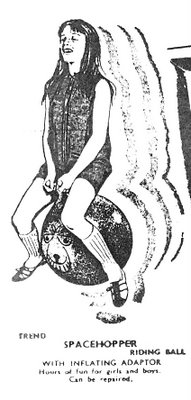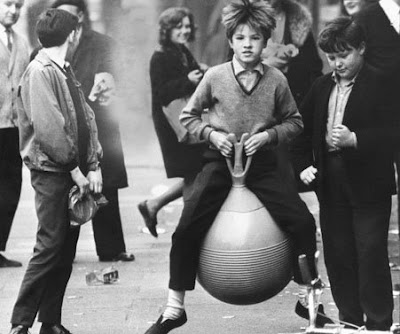The Magic Roundabout! Using the striking visuals of a French animated series created by Serge Danot, Eric Thompson created his own characters and made it a legend in its own tea time here in England.
And it worked beautifully. The French visuals were surreal and highly colourful, the characters looked adorable, and when you added Mr Thompson's highly droll and very English stories, you had an unlikely recipe for a mega success. Mr Thompson simply turned down the volume for each episode of the French
Le Manége Enchanté and did his own thing.
'Good gracious!' said Florence.
'Fancy!' said Brian.
Dougal - every dog has his day. Or tea time in this case. Interesting fact: Did you know that English animator Ivor Wood worked with Serge Danot on the original series?
I love this show. And I have a special link. I made my debut on the same day as the Eric Thompson/BBC version of
The Magic Roundabout - 18 October, 1965.
So proud! Every birthday, I raise a mug to Florence, Dougal and co.
Eric Thompson, the esteemed creator of the English version characters, once said that he didn't believe in talking down to children. Children, he said, were just people who hadn't lived very long.
'Radio Times', 1968.
Interviewed in 1998, Eric Thompson's wife, the actress Phyllida Law, said:
'He got £15.00 an episode. That charming 'it's not acting, you're just reading it' thing. He had no rights to anything but his scripts, not even to the names, although they were his. Still, the
Magic Roundabout helped us move from a flat to a heavenly house just up the road.'
Phyllida Law revealed that Eric Thompson sought inspiration from his heroes and those around him for the characterisations and names, seeing himself as being like Brian - irritatingly cheerful - and his wife as being a bit of a model for Ermintrude the cow. Mr MacHenry, the gardener, was named after their local chemist, and Buxton the cat from the
Dougal and the Blue Cat film named after a cousin of Ms Law. Dougal's sometimes-mentioned-but-never-seen Auntie Megsie was based on his mother-in-law.
As for Dougal, he was partly based on Tony Hancock, but Ms Law, who always called her husband 'Tom' or 'Thompson', commented: 'He never listened to the French script. Thompson would never take us to a French restaurant. It was partly a joke, and a very Dougallish, Hancock sort of joke. He always thought he was like Brian the snail because he was irritatingly cheerful, but without doubt Dougal was to a great extent him.'
There were quite a lot of colourful characters in the Magic Garden, most well-known regulars, a few obscure like Penelope the Spider. I think I saw her about once. And the two little birds, The Tweets. Eh? Did not compute. They simply didn't register.
In a minute, I'll lollop through the regulars in order of my preference, but I'll start with somebody who actually comes in at number six on my own list. Why? Well, he was the very first character to appear in the show back on that eventful Monday in 1965.
I remember talking to my mate Don back in the 1990s about the
Roundabout characters. 'My favourite character was Mr Rusty,' said Don.
I was incredulous. Don't get me wrong, I liked Mr Rusty, but he wasn't that interesting and didn't even spend that much time on screen usually. He played the barrel organ and owned the Roundabout, so his role was essential, but still... I always thought there was a faintly melancholic air about him, and could not get worked up over him.
Then I thought about my own favourite character, Florence. She was hardly the most amusing and fascinating of the
Roundabout crowd either. In fact, I remember her once being referred to as 'prissy'. Why on earth was she my favourite? Well, back in the early 1990s, at the time of my
Roundabout-orientated conflab with my mate Don, I was a care worker, doing a lot of counselling, and so decided, in my late-twenty-something-infinite-wisdom, that my feelings for Florence must have a deep, psychological basis. Perhaps I favoured her because she represented stable femininity? My mother was not stable, nor could it really be said were any other of the females in my family circle when I was a child, so perhaps Florence had provided me with something I was lacking?
I pondered, I analysed, then said to Don, 'Maybe Mr Rusty represented something lacking in your own life? A stable masculine influence, perhaps?'
'No,' said Don, 'I just liked Mr Rusty.'
So that was that.
And Florence is my favourite.
So that's that.
Mr Rusty with his Roundabout and trusty barrel organ.
Mr Rusty with Dougal and Florence.
The next on my personal list of
Roundabout faves is Ermintrude the cow. Lovely Ermy - an upper class, highly good natured, pink-with-red-dots-and-a-blue-hat cow.
Perhaps Ermintrude represented another stable feminine figure to me? A lovable, dotty auntie figure? Or perhaps it's just time to cut out the psychobabble?
'Hello, dear hearts!'
Next up would have to be Brian the snail. Always cheerful. Always ready to get up Dougal the dog's nose. Brian was the working class man to Dougal's overbearing management figure, and he was great fun.
'Allo!' said Brian, arriving.
Brian, up a tree.
Brian with his lovely shaggy friend.
Next comes Dougal himself. Grandiose and at times manic, Dougal was the pivotal character in the Roundabout saga. This lover of sugar lumps had a spiky relationship with Brian, but the two were genuinely fond of each other really. Junior Points Of View revealed in 1967 that Dougal was the seventh son of a freelance lamp-post inspector, sent to Shepherd’s Bush to train as a sheepdog, was then an extra in The Hound of the Baskervilles, had bark-on parts in dog food commercials, and was discovered by Florence and launched as a dog star.
Dougal dreamt of glory. It was a dog's life in the Magic Garden.
And then there was Zebedee - a moustachioed, red-faced, pointy-pupiled thingy on a spring. What on earth WAS Zebedee? Well, actually, he was a jack who had come out of his box. He arrived in the very first episode of the
Magic Roundabout in 1965 in a parcel, promising sad Mr Rusty that he would bring life back to the Roundabout, which had fallen out of favour with the local children. His role in the Garden was pure magic! His moustache was the source of all the abracadabra stuff and could make all sorts of things happen. He was the one who first brought Florence to the Garden, and he brought her along in many subsequent episodes, too. She was often seen to be waiting for him by the Roundabout. Zebedee also called time on most episode's events - 'Time for bed', that is.
Dougal didn't half fancy himself.
Still, he was rather adorable, and, being a major star, given to fits of quite understandable temperament. But he could be quite rugged at times. And sometimes a little coarse. He once told Brian to zip his screamer.
Episode One - and Zebedee arrives to help Mr Rusty.
Florence calls to Zebedee - who arrives. All together now: 'BOING!'
'Hello,' he said. 'Ready to go the Garden?'
Spaced-out (but only on sleep) Dylan.
Dylan was a guitar playing American hippie rabbit, who first snoozed onto the Magic Garden scene in about 1967. The Observer newspaper spoke to Eric Thompson on the subject and published an article on 23 April 1967:
He [Eric Thompson]
tries to amuse the adults with little jokes – provided they mean something to the children, too – but he is conscious of the danger of making the whole thing sophisticated.
A rather hip rabbit joined the cast recently, and when Dougal remarked that he wasn’t like a rabbit at all, because he didn’t skip around all the time, the rabbit replied: “We’re rethinking the image.”
Mr Thompson fancies he went a bit too far that time: “Children couldn’t really get hold of an idea like that.”
Dylan tries to recreate Dougal's 'epic' nose.
The Magic Roundabout quickly became cult viewing for adults. And it was not surprising. There was lots to appeal. One of my favourite scenarios involved Brian the snail feeling exploited by Dougal as they undertook some improbable venture or other. With Dougal in charge, of course.
'I'll report you to the Union!' squawked Brian.
'If you were in a union, I'd sack you!' said Dougal.
Some of the books based on the series make droll reading too - the ones written by Eric Thompson, that is. In one late 1960s publication Brian, feeling his living space was a little too confined, revealed that he was on the waiting list for a council house. This curious jostling of kiddie whimsy with adult reality still makes me laugh today. Genius.
Trouble brewed when Ermintrude decided to become a meter maid.
Mr MacHenry was the Magic Garden's gardener. He whizzed in on a little bike which went 'whee!' and seemed a bit of an odd-bod - most of the time a staid Englishman and, on at least one occasion, a manic, stereotypical Irishman, uttering such stereotypical gems as 'Yes indeed and begorrah!' Well, it livened him up as a character.
The train was a rare visitor to The Garden, but tended to liven things up when she did put in an appearance. Yes, that's right,
she. The train was more than slightly hoity-toity, likely to go off in a huff at the slightest provocation. Go off in a HUFF - geddit?!!
And what about the larger children seen on the Roundabout on the opening and closing credits? Who were they? Well, they were Basil (the yellow topped boy), Paul (the blue topped boy) and Rosalie (self explanatory). They rarely appeared in episodes, but poor, dear Rosalie is etched on my mind after a tragic incident in the early 1970s.
I was a little lad, sitting on the loo and playing with a small blue plastic Rosalie I'd got out of a box of biscuits. She was fearlessly scaling a couple of small pipes which rose from the floor to the boiler beside the lavvy. Then, suddenly, DISASTER! Rosalie somehow slipped from my fingers and plummeted down, down, down, and disappeared through the hole in the floor where the pipes emerged.
I was devastated. I peered through the hole... yes, there she was, face-down and completely inert. Poor darling. I dashed to my mother who said: 'If you think I'm 'aving the floorboards up for a bit of plastic, you've got another think coming!'
I beseeched her. I even thought of be-screeching her. But boys were not allowed to cry in my household.
So that was that.
The
Roundabout spun on and on, right up until early 1977, still as 1960s as could be. No Glam Rock. No Disco. No Johnny Rotten lookey-likey. After the show's end, it cropped up occasionally in repeats and, in 1989, the BBC released the first
Magic Roundabout video.
As the late 1980s Acid House rave scene turned into the early 1990s rave scene, the
Magic Roundabout was revived. The show seemed to fit well into the culture of that time, fuelled by drugs like ecstasy, and all sorts of things were read into it - just as they had been during its original run. Dougal and Dylan and co were, of course, as high as kites. The psychedelic landscape was indicative of that. Yes, the
Magic Roundabout was simply the hippie 1960s played out by puppets. Every innocent word and expression of the series seemed to be linked to a groovy druggie lifestyle. Absolute nonsense, of course. Eric Thompson had simply poked a bit of gentle and innocent fun at the pop culture of the
Roundabout era. Zebedee really was not 'on' something, and Dougal's sugar lumps were simply sugar lumps.
Back to Phyllida Law in 1998, who said: 'Thompson was rather surprised to hear that Dylan was a cokehead or whatever. He was just asleep a lot, this rabbit. He never smoked or anything. Tom just shrieked with laughter. Not that he shrieked because he was a straight man. It was me that did the shrieking.'
Back to the start of the 1990s, and new
Roundabout merchandising began to turn up.
The first sign was a lovely series of T-shirts available at C&A stores. There was Dougal, and Zebedee and all sorts. Then the theme tune was transformed into various rave remixes and Nigel Planer brought the
Roundabout back in a slot on early morning Channel 4 news.
My dear old Zebedee 'Time For Bed' T-shirt illustration from 1990. And the shirt seen on me on holiday last year. Yes, I do bear a certain resemblance to Dougal, don't I?
Florence disliked vulgarity.
Nigel - you did great at first - Florence pondering on the fact that everything was so intrinsically symbiotic was inspired. But then I fell off your
Roundabout when Florence suggested a burping contest. Nigel, my darling Florence would NEVER have suggested such a thing. Not even in the 1990s. This was the girl who was constantly telling Dougal not to be vulgar, who admonished him with a stern 'REALLY, DOUGAL!' when he slurped his sugar lumps. This was an adorable young lady, steeped in Victoriana. Burping contest? No, no, NO, mate. After that your
Roundabout revival simply became some of my favourite screen visuals with you doing a voice over.
Still, it's not all bad news - as Neil of the
Young Ones you will always be one of my 1980s heroes.
More videos were released and the much-feared
Dougal and the Blue Cat was amongst them. This terrified me when I was a little kid because of the Magic Garden folk being attacked and imprisoned by the dreadful Blue Force which took over the Magic Garden. My own little life had taken a turn for the worse in 1969 and I was going through bad times throughout the 1970s. The film didn't help, which seems daft, but I was six-years-old at the time. The Magic Garden was my little bolt hole and I hated it becoming insecure too. Still, never mind. The nightly episodes continued in their usual glorious 'everything in the Garden is lovely' vein and I soon recovered.
The
Roundabout has since been revived in glorious CGI with Kylie Minogue as Florence. Not for me. Only one
Roundabout for me. Eric Thompson's version. The characters are as much a part of my childhood as any traditional fairy tale characters. With added adult wit appeal.
Oh well. Time for bed.


%20-%20Copy.jpg)


















































